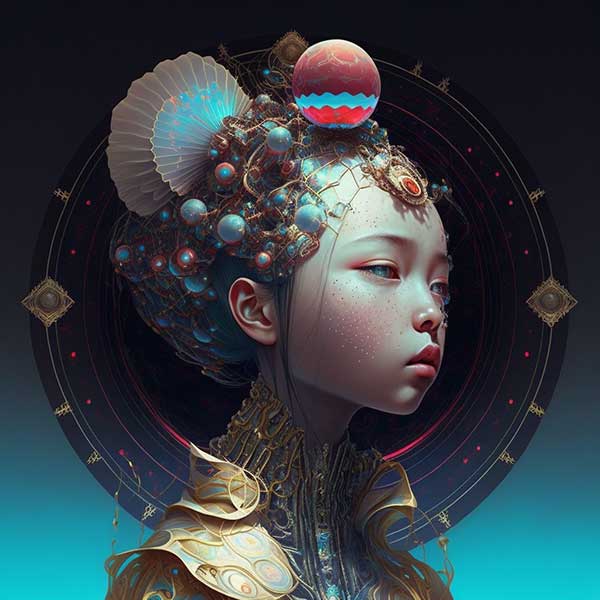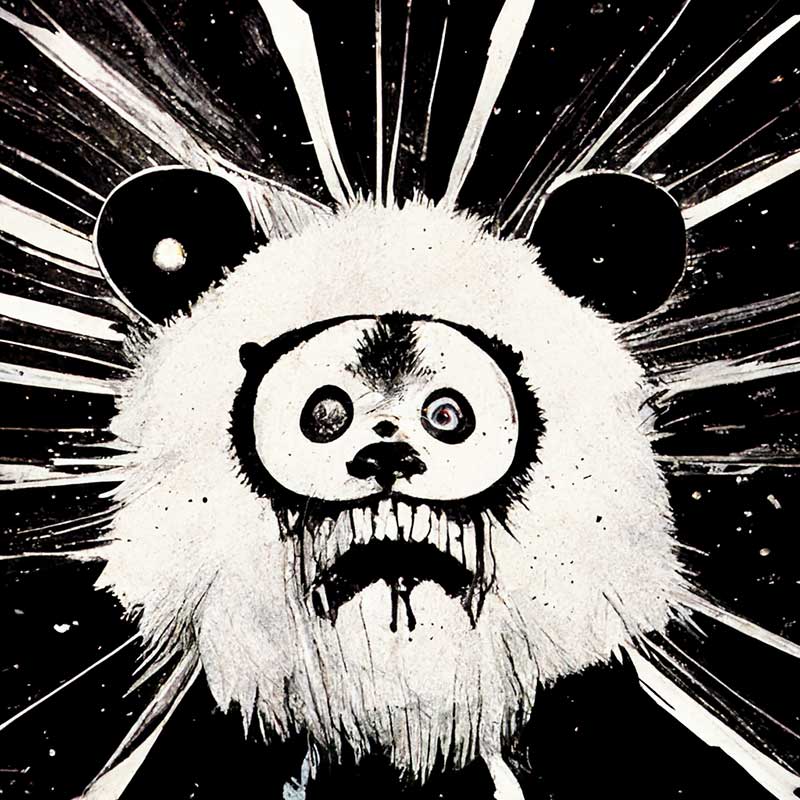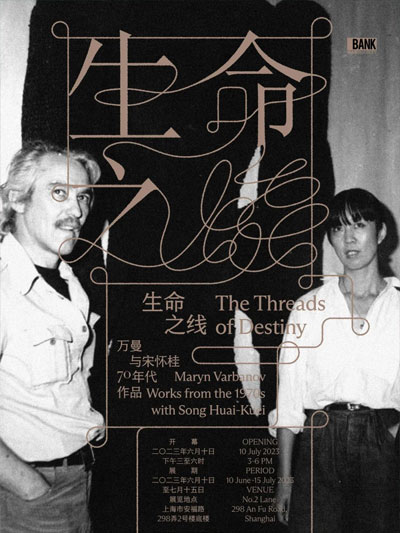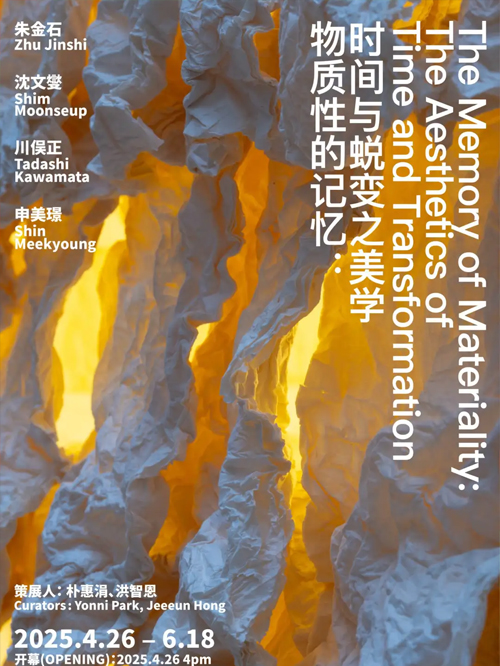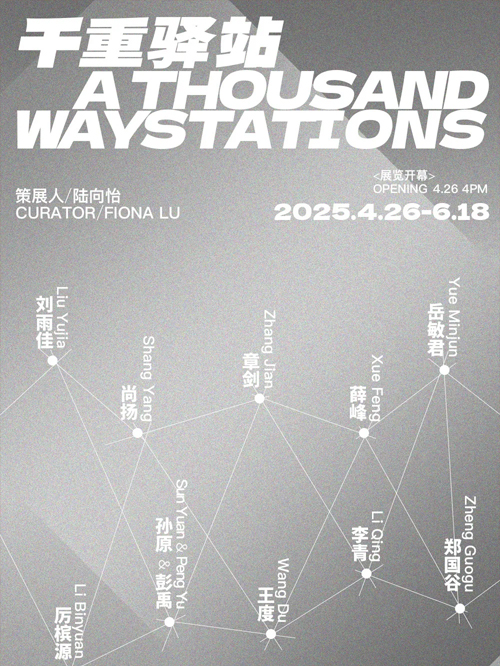BANK欣然宣布即将开幕的展览“生命之线:万曼与宋怀桂70年代作品”,该展览将展示万曼(1932-1989)和宋怀桂(又称宋夫人)(1937-2006)之间超凡的艺术合作。这对中国的传奇夫妇,他们的生活和工作使得经济改革时期的中国文化景观焕然一新。展览中心为万曼的纤维圆柱和装置,这些作品的制作采用了保加利亚的传统技术—用山羊毛和冷水离心机制作毛毡,令其状态松弛有如超现实森林中的树冠。这些开创性的作品使万曼走在了70年代欧洲纤维艺术运动的前列。同时我们还呈现一组蝴蝶形状软雕塑作品,这是同一时期万曼和宋怀桂的合作作品,它化为一种明确的“阴”的能量成为圆柱的补充。这些优雅的作品,灵感来自著名的周公梦蝶典故,既梦幻又有强烈的阴柔气质。
宋怀桂和万曼的合作既有趣味又富有创造性,不仅突出了他们共有的艺术感性,也是他们共同生活和家庭关系的明确延伸,这种羁绊带领他们走遍世界各地。这些作品于1970年代在巴黎艺术城(Cité Internationale des Arts)的工作室制作,成为这对夫妇在1970年代末和1980年代初返回中国的重要先作。
BANK很荣幸首次在上海展出这些艺术作品,从中我们看到了两位艺术家共有的感受与兴趣——现代和正统,有机和星系,东方和西方,这些共同谱写了他们的传奇。“命运之线”也将作为前瞻,迎接7月底将于香港M+博物馆举办的宋怀桂回顾展。
BANK is thrilled to announce the opening of "The Threads of Destiny: Maryn Varbanov, Works from the 1970s, with Song Huai-Kuei”. This exhibition presents the remarkable artistic partnership of Maryn Varbanov (1932-1989) and Song Huai-Kuei aka Madame Song (1937-2006), China’s legendary couple whose life and work helped to transform the cultural landscape of economic reform-era China. Focusing on Varbanov’s columns and installations - made with a traditional Bulgarian technique - using goat’s hair and a cold-water centrifuge to produce felt, loosely resemble crowns of trees in a surreal forest. These seminal works helped bring him to the forefront of the fiber arts movement in Europe in the seventies. Shown alongside are Varbanov and Song’s collaborative butterfly wall works of the same period which complement the columns with a definitive Yin energy. These elegant works, inspired by Zhuang Zi’s famous butterfly poem, are at once magical and intensely feminine.
The playful and creative collaboration of Song Huai-Kuei and Varbanov not only foregrounds their shared artistic sentiments, but is a definitive extension of their shared life and family which took them around the world. Produced in his Cité des Art studio in Paris in the 1970s, these works act as precedent to the couple’s momentous return to China at the end of the 1970s and early 1980s.
BANK is proud to present this selection of artistic output for the first time in Shanghai where we see the artists’ overlapping sensibilities and interests – modern and orthodox, organic and galactic, Eastern and Western, that have helped define their legacy. “The Threads of Destiny” also foreshadows Song Huai-Kuei’s retrospective exhibition at M+ in HK this coming July.
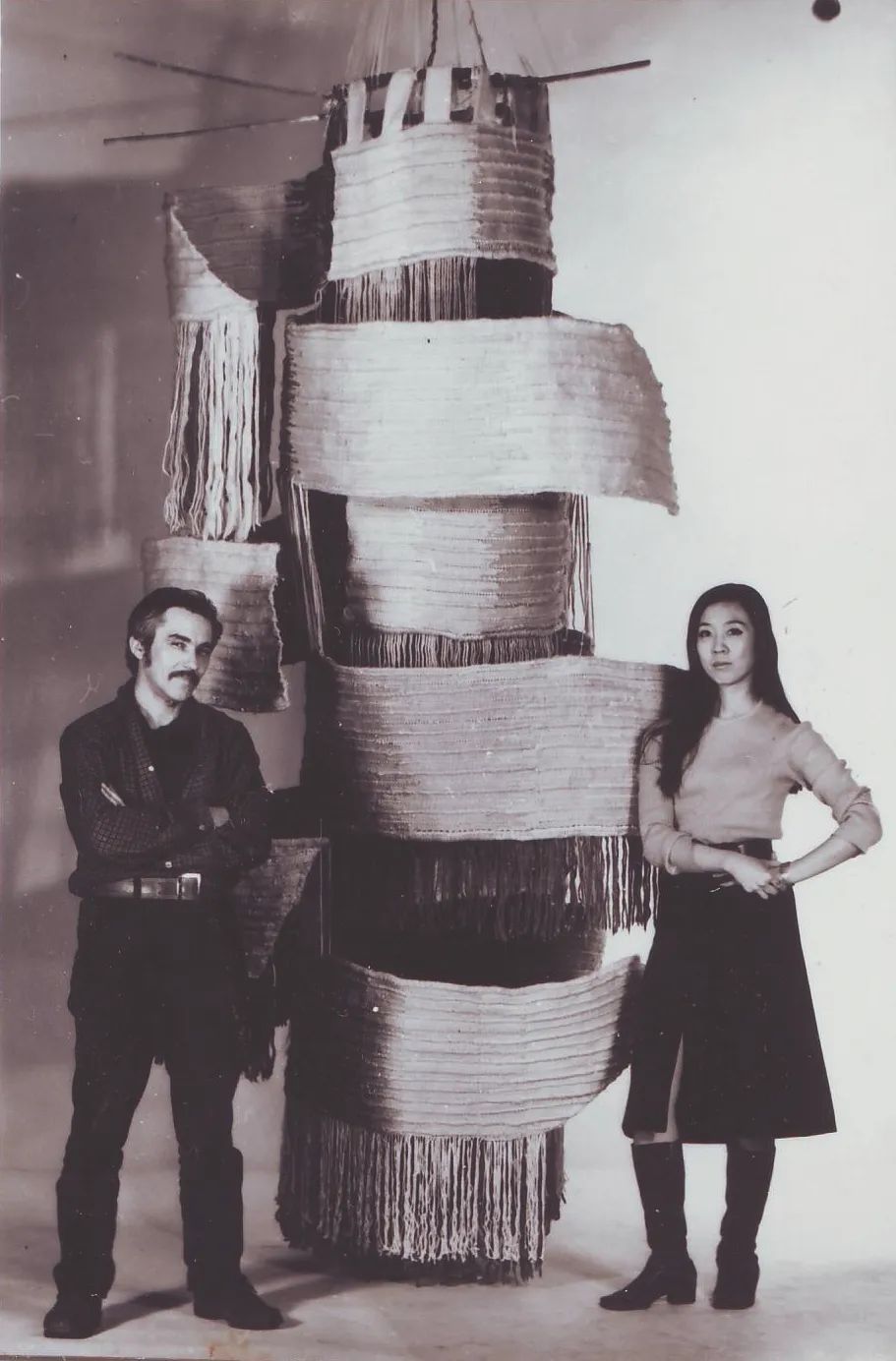
万曼与宋怀桂于作品《构成2001》前,1969
Maryn Varbanov & Song Huai-Kuei with their work Composition 2001, 1969
Courtesy of BANK/MABSOCIETY and the Estate of Maryn Varbanov
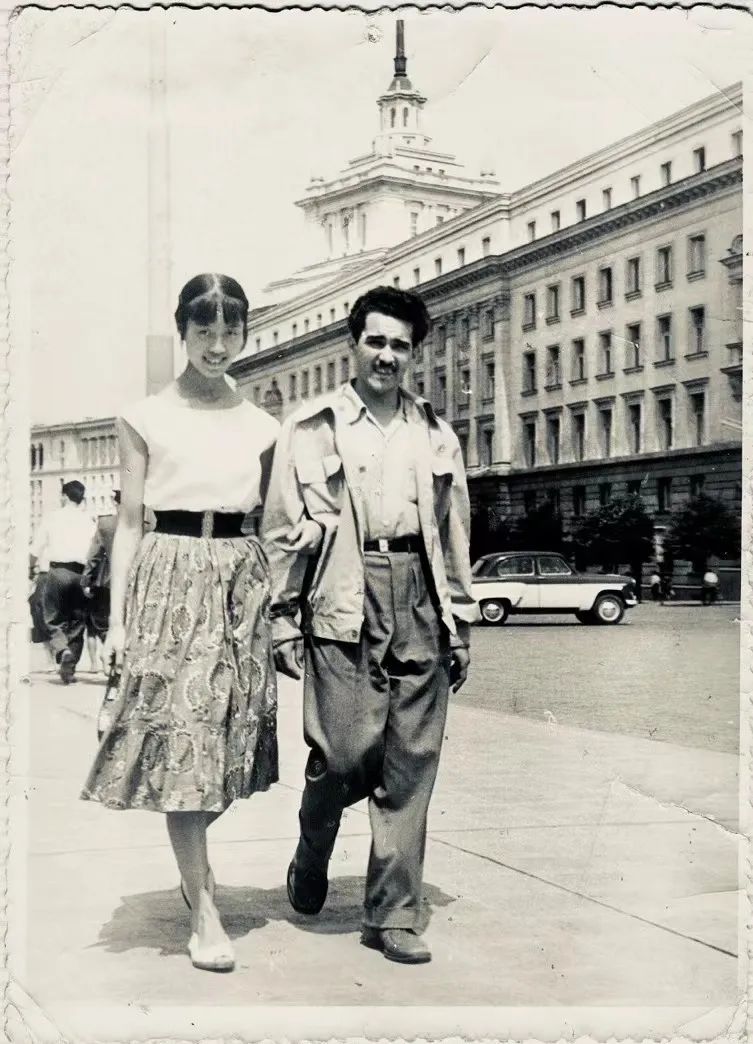
万曼(1932年生于保加利亚-1989年逝世于北京)是一位享有盛誉的艺术家,他的影响力广泛,从故乡索非亚到第二故乡巴黎,以及对中国八五新潮美术的影响深远。万曼对世界艺术的卓越贡献不仅在他自己的持之以恒的艺术实践中,同时他倾其所有投身于教育工作者和欧亚大陆两地之间的文化外交官。
1951年,作为解放后中国第一批交换留学生之一,万曼就读于北京的中央美术学院,和著名的宋夫人(届时是他的翻译兼监护人)相识相恋,尽管当时涉外婚姻并不被法律允许。1959年,万曼带着宋怀桂和他们的女儿宋小虹回到欧洲后,成立了索菲亚艺术学院的第一个挂毯系,在那里进行了编织雕塑的实验。他开创了“软雕塑”流派——现在被称为“纤维艺术”——通过颠覆性地重新使用作为装饰艺术的挂毯,并质疑其潜在的建筑结构。万曼后来连续三届在洛桑国际双年展展出,并且著名的巴黎市立现代艺术博物馆(Musee d’Art Moderne de la Ville de Paris)、埃蒂安·德考斯画廊(Galerie Etienne de Causans)、奥德马特美术馆(Galerie Herve Odermatt)和巴黎大皇宫(Grand Palais)均展出了他富有远见的纤维纺织作品。
宋怀桂来到欧洲后继续在索非亚艺术学院完成学业,并于1962年毕业。之后,她与万曼一起工作,并在保加利亚新兴的时装业活跃。她穿梭于艺术和时尚界,这对夫妇在索菲亚和巴黎之间来回奔波。1979年,著名时装设计师皮尔·卡丹在巴黎FIAC艺术展上收藏了万曼的几件作品,这对夫妇随即被邀请到卡丹在纽约市新开的卡丹空间(Espace Cardin),在那里万曼展出了他的作品,并且宋夫人开始了与卡丹的终身合作。宋夫人不仅将卡丹和他的高级时装品牌引入中国,而且还组织并负责了中国第一批时装秀和模特公司。她也是卡丹在北京崇文门的马克西姆餐厅的主人,一直到她2006年去世之前,她接待了无数国际上的文化和政治精英。
20世纪80年代初,万曼慷慨地将法国巴黎国际艺术城(Cité Internationale des Arts)的一个工作室捐赠给了现在的中国美术学院,将原本被隔阂的中国迎入了全球艺术界。1985年,万曼与几位年轻的中国艺术家一起,组织并参加了在北京国家美术馆举办的现代艺术挂毯展,这场展览也同时是艺术家罗伯特·劳森伯格(Robert Rauschenberg)在中国的首次重要亮相。策展人侯瀚如引用当时劳申伯格的话说,“这次软雕塑展览是他见过的最好的展览之一。”1986年,万曼被邀请在杭州的中国美术学院建立万曼壁挂研究所(IATV)。为了强调挂毯作为一种进口商品的身份,艺术家从中国和东欧的贸易历史中汲取了灵感。他将希腊人、斯拉夫人和奥斯曼人的编织情感与中国传统的丝绸和羊毛编织交织在一起,将装置作为一种艺术形式在中国奠定了基础。他的一些学生与追随者包含侯瀚如、谷文达、梁绍基、施慧等。万曼于1989年去世,但IATV仍然留存并在杭州活跃,近年发起的国际纤维艺术三年展表达了对他的深切纪念。
在万曼与宋怀桂的艺术实践、个人生活和影响中,他们在东方和西方、本土和国际、传统和前卫之间进行了微妙的协商,双重性是贯彻他们生活和作品的基本特征。BANK非常荣幸有机会在上海首次展示这对伴侣的合作作品。
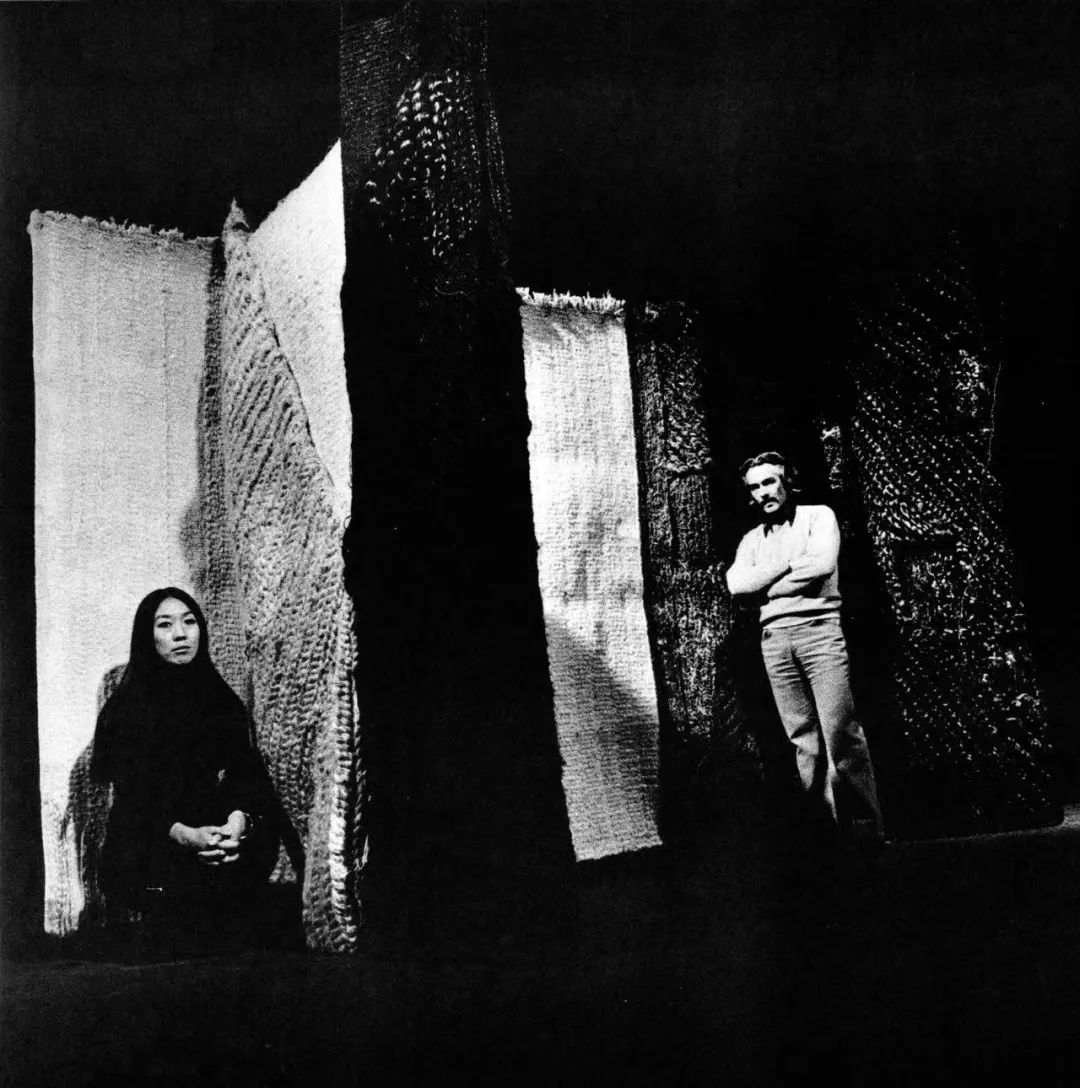
Maryn Varbanov (b 1932, Bulgaria – d 1989, Beijing) was a prestigious artist whose influence stretched from his native Bulgaria, to his adopted home of Paris, and more notably to China, where he was a powerful influence on the formation of the country’s avante-garde in its crucial, early years.
In 1951, as one of the first exchange students in liberated China, Varbanov studied at the Central Academy of Fine Arts in Beijing, and went on, against the laws of the day, to wed his translator and minder, the illustrious Madame Song. The couple soon moved Europe with their daughter Boriana in 1959. It was then that Varbanov founded Sofia Academy of Art’s first tapestry department where experimentations in woven sculptures took place. He pioneered the genre of “soft sculpture” – now known as “fiber art” – by subversively re-appropriating the decorative art of tapestry and interrogating its underlying architectonic structure. Varbanov went on to show his visionary textile works at three consecutive International Biennales in Lausanne as well as at the prestigious Musee d’Art Moderne de la Ville de Paris, Galerie Etienne de Causans, Galerie Herve Odermatt, and The Grand Palais.
Song Huai-Kuei upon arrival in Europe went on to finish her studies at the Sofia Academy of Art and graduated in 1962. Afterwards she worked with Varbanov as well as in Bulgaria’s burgeoning fashion industry. She continued to skirt both the worlds of art and fashion as the couple shuttled between Sofia and Paris. In 1979 the famous fashion designer Pierre Cardin collected several of Varbanov’s work at the FIAC art fair in Paris. The couple was immediately invited to Cardin’s newly opened Espace Cardin in NYC where Varbanov exhibited his works and Madame Song began a lifelong collaboration with Cardin. Song not only ushered Cardin and his high fashion label into China but was also responsible for China’s first fashion shows and modeling agencies. She was also the illustrious host at Cardin’s Maxim’s restaurant on Chongwenmen in Beijing, who welcomed a long trail of international cultural and political elite till her death in 2006.
In the early 1980s Varbanov generously donated an atelier at Cité Internationale des Arts to what is now know as the China Academy of Art, singlehandedly welcoming an otherwise isolated China to the global art community. In 1985 Varbanov organized and participated, along with several young Chinese artists, in the Modern Artistic Tapestry Exhibition at the Museum of Fine Arts in Beijing. The show ran concurrent with Robert Rauschenberg’s momentous China debut. Curator Hou Hanru quotes Rauschenberg at the time saying that the “soft sculpture exhibition was one of the best shows he had ever seen”. In 1986, Varbanov was then invited to establish the Institute of Art Tapestry Varbanov (IATV) at the China Academy of Art in Hangzhou. Underscoring the identity of tapestry as an imported good, the artist drew from both Chinese and Eastern European trade histories. He interlaced Hellenic, Slavic, and Ottoman knitting sensibilities with traditional Chinese silk and wool weaving and inadvertently helped to lay the foundation for installation as an art form in China. Some of his notable students and admirers were Hou Hanru, Gu Wenda, Liang Shaoji, Shi Hui and many others. Varbanov passed away in 1989 but IATV still is alive and active in Hangzhou, recently initiating an international Triennial of Fiber Art in his honor.
Throughout their artistic practice, personal lives, and influence, Varbanov and Song delicately negotiated between East and West; local and international; tradition and the avant-garde, embodying duality itself as an essential feature to their life and legacy. BANK is very honored to have the opportunity to showcase this collaboration for the first time in Shanghai.
